There can be your advertisement
300x150
The Truth About Sliding Doors: 4 Pros, 1 Con, 6 Myths, and 8 Opinions
Clear and with examples about the differences, functionality, and advantages
It might seem like a simple choice—what doors you like, that's what you should pick. But it's not always so simple. Of course, you can choose any doors—but is it worth it?
In the design projects we publish, sliding doors are often featured, and our editorial team appreciates these solutions: they look beautiful and modern in interiors. But most importantly, these doors are like a magic wand for small apartments or tight spaces—its functionality is impressive.
The best example is shown in the diagram below: just think about it, a space saving of 8 m², all thanks to the right choice of doors!
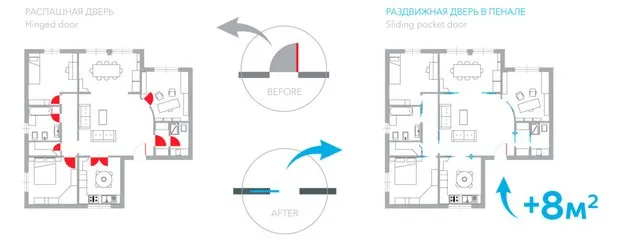
However, we'd like to know for sure what makes these doors good and what not, whether they're easy to use, and whether they are expensive to maintain. That's why we asked this question of those who use them daily.
We also requested comments from designers who choose such doors for their projects and from UNION experts—company that has been producing and installing sliding doors every day since 1990, more than 30 years.
Eugene Bobrov, Expert, Sales Director at UNION
But let's start by understanding what makes a sliding door different from a hinged door and a sliding partition?
Eugene Bobrov: Of course, any rule has exceptions, but the main difference between sliding doors and hinged doors is the absence of a door frame and the presence of a sliding mechanism. Everything else—door panel size, material—is almost identical.
Partitions are a completely different story: they are special structures made exclusively to customer's size, they can span large spaces—up to 3.5 meters in height and from 0.6 to 5–6 meters wide or more. Their main task is to zone the room and let in daylight. Therefore, partitions are usually made of glass.
Opinion 1
Nasta: In our apartment, there's a sliding door leading to the bathroom. We chose it because of the very small hallway—there would have been no room to turn around with a regular door.
At first, the guide rail was installed from below, which was very inconvenient: dirt and dust clogged the track, and over time, the door’s movement became rough. We had to replace the structure—install a door with an upper rail.
Everything works great now.

Design: Mikhail Novinsky, sliding door in UNION panel
Sliding doors with bottom rails are only made by manufacturers who don't care about the quality of the door or their reputation.
Eugene Bobrov: Nasta is absolutely right—sliding doors with bottom rails are only made by manufacturers who don't care about the quality of the door or their reputation. Dust and dirt will definitely get into the bottom rail, making the door squeak, move noisily, and eventually jam. Bottom rails should only be used in wardrobes where nobody walks.
At UNION, we use only reliable Italian rails with upper mounting from ECLISSE factory. There's nothing at the bottom, so floor coverings won't be damaged. Also, ECLISSE mechanisms are very high-quality—smooth and silent.
Jenya Lykasova, J. Lykasova Design Studio: Of course, in our studio's projects, we have used sliding doors—this is an excellent solution when it comes to opening in places where there are many doors, such as a hallway or corridor.
Sliding doors prevent collisions with other doors and save space significantly. This, in turn, improves ergonomics and comfort of the room.
Opinion 2
Anton: Our interior is minimalist—white walls, white sliding doors to the ceiling. I like that they don't take up space, blend into the space, and there's no need to worry about a small child pinching a finger or locking themselves in somewhere—doors open and close easily.
Minus: they are expensive and rather noisy, it's hard to close them silently at night.
Regarding noise when closing— I am categorical: a quality sliding door should not be noisy. Eugene Bobrov: In this case, the high price of a sliding door may be due to its size. The higher the door—the more expensive it is. This applies to both sliding and hinged doors. Making a tall panel that keeps its geometry and strength is difficult.
Price increases also due to various accessories: for example, finishing with thresholds or trim, installing a lock. But if we compare the basic configurations of sliding and hinged doors—they will be almost identical in price.
As for noise when closing, I am categorical: a quality sliding door should not be noisy. Manufacturers of sliding door hardware don't just make millions of mechanisms; they aim for complete silence and smooth closing. My advice is to choose leading manufacturers whose doors are completely silent and smooth. Then there will be no discomfort.

Design: UNION, sliding door on hidden MAGIC mechanism
Anton and Denis Yurov, Yurov Interiors: We often use MAGIC doors in our projects. With them, it's not only about saving square meters in small apartments but also creating wide door openings where a regular door would be impossible or at least inconvenient to use.
Opinion 3
Katya: I have lived with sliding doors for a year and a half and am generally satisfied. However, it's important to know that the wall must be of a certain thickness and prepare it in advance. If your renovation is already complete, installing sliding doors won't work. Also, it's important to understand that sliding doors have less sound insulation than hinged ones.
A sliding door along the wall in principle does not require any preparation of the wall—it can be any wall. The main thing is that it should be able to support the weight of the door at the mounting point.
Eugene Bobrov: It's not entirely true that you cannot install sliding doors after renovation. There are different types of sliding doors—everything depends on the construction you choose.
For example, a sliding door along the wall does not require any wall preparation—it can be any wall. The main thing is that it should support the weight of the door at the mounting point. If we're talking about a sliding door in a panel, then yes—more extensive door opening is required, the panel needs to be installed, it should be sealed with gypsum board together with the wall, and then painted or wallpapered.
Regarding sound insulation. If it's just a basic kit of the rail and door panel, then yes—the sound insulation of sliding doors will be lower. But if we use a sliding door with a frame, special threshold with maximum sealing—sound insulation, although not 100% identical to that of hinged doors, will still be quite good.
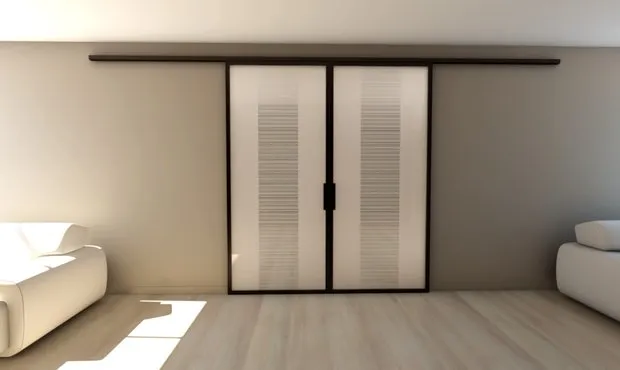
Design: UNION, sliding door—CRISTAL panels, wall mounting
A sliding door can be made completely invisible!
Eugene Bobrov: By the way, a sliding door can be made completely invisible! For example, make the panel mirror-like, install it on a special invisible MAGIC rail, and don't put a handle. Visually, it will look like a regular mirror attached to the wall—nobody will guess that there's a room behind it.
Opinion 4
Varya: Sliding doors in panels are much more convenient, look more elegant, close smoothly and silently, and save space in the apartment—especially if they're mostly open like mine. The only issue is that the wall with the panel is useless—hanging a TV on it isn't possible. Or you'd have to build an additional frame from foam blocks, which is at least another 5 cm on each side.
When you have a 30 square meter apartment with three doors in panels—you save up to three meters of area. That’s really cool!
Eugene Bobrov: In my opinion, a door in a panel is the most ideal structure that can be installed in small apartments. When needed, there's a door; when not needed, it doesn't get in the way, and all walls can be used to maximum extent: put a wardrobe, sofa, footstool, hang a picture.
If you need to hang a TV—just reinforce the panel with 2 cm plywood and cover it with gypsum board. But this, of course, should be considered during the rough renovation stage.
There is a wide variety of panel constructions. There are simple panels—just one door leaf goes into the wall. There are two-leaf panels, where one leaf goes into one wall and the other into another. There are various mechanisms—pull one leaf, and the other closes too. There are electric motors—doors open with a button, remote control, or motion sensor.
There are even constructions that solve problems of inconvenient or tiny spaces: a panel can be placed between two rooms, and both door leaves can go into it.
Panels are a separate very interesting and functional topic. No wonder they are loved and actively used by Italians!
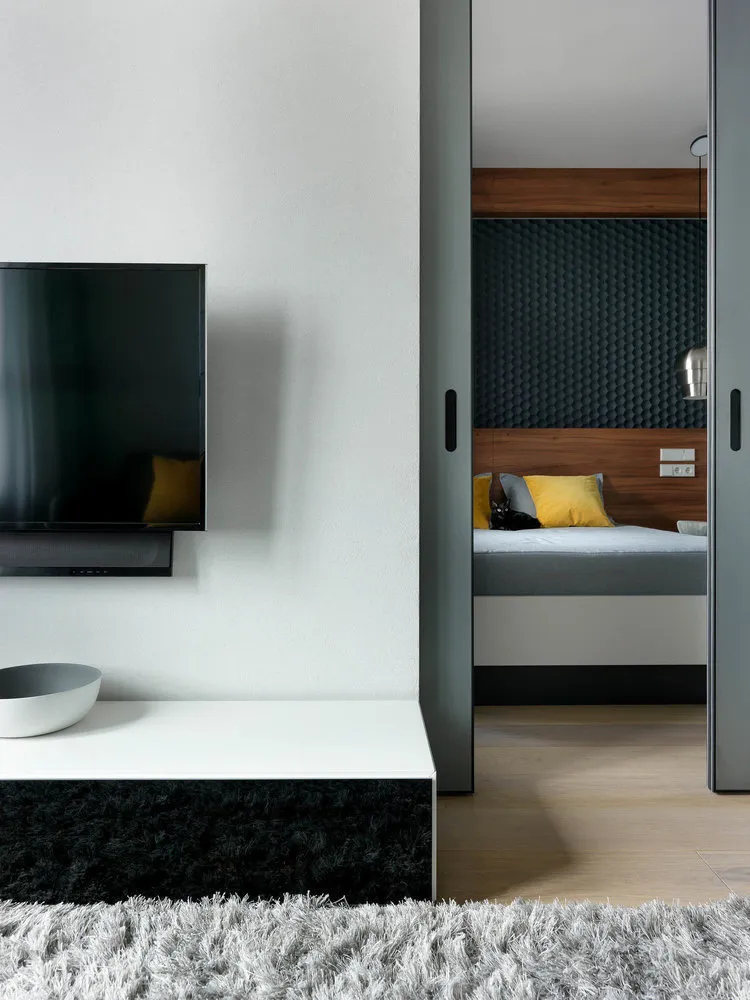
Design: Mikhail Novinsky, sliding door in UNION panel
Mikhail Novinsky, MNdesign: The advantages of panel doors are obvious: they take up little space, which is important in narrow and confined spaces; also, the door hides in the wall when open. However, it's important to remember that not all manufacturers have well-developed construction of such doors. In my projects, I often use UNION panel doors, which I fully trust.
So, let's summarize all the information we gathered about sliding doors:
PROS
— save space,
— safe,
— do not slam shut from drafts,
— mask rooms.
CONS
— less sound insulation than hinged doors.
MYTHS
— require more maintenance,
— noisy,
— hard to open,
— wall must be prepared in advance for installation,
— you can't hang a TV on the wall with a panel,
— expensive.
Video below: UNION doors in panel in Anton and Denis Yurov's project, Yurov Interiors
Well, if you like sliding doors or there’s just no space for hinged doors in your apartment—choose them boldly. But buy from trusted manufacturers who guarantee not only the quality of the door panel but also the quality of the entire mechanism and its operation throughout the service life.
We, for example, are enthusiastic about sliding doors in our editorial team—what about you?
Cover: Yurov Interiors design project
More articles:
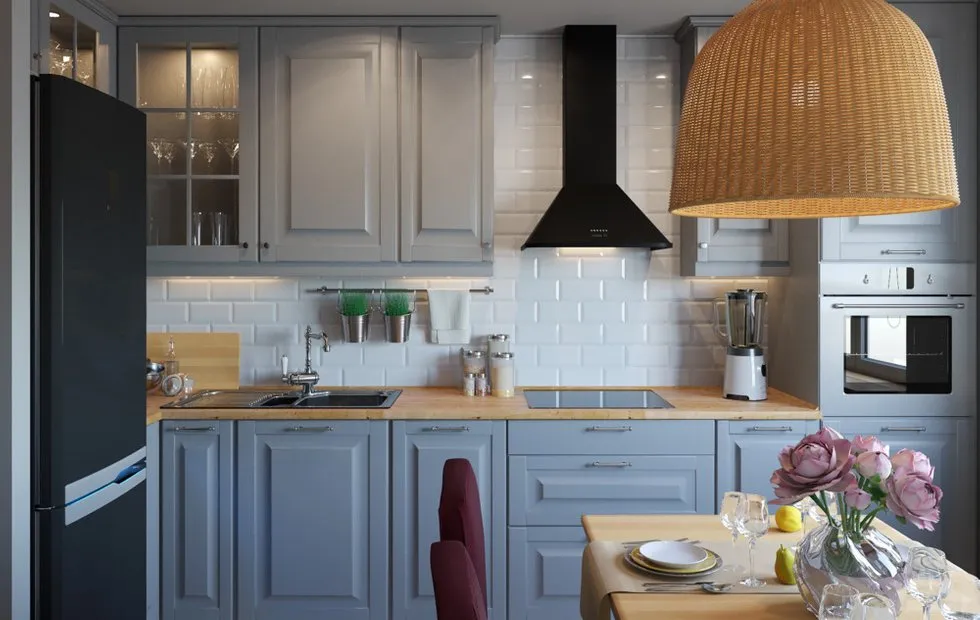 How to Use the IKEA Kitchen Planner: Instructions + Tips
How to Use the IKEA Kitchen Planner: Instructions + Tips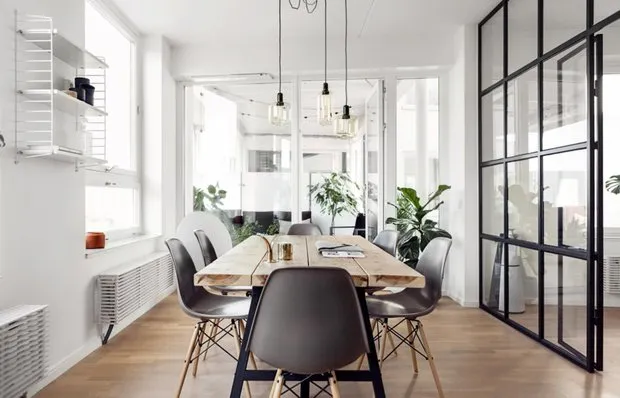 How to Do a Renovation Without Going Over Budget
How to Do a Renovation Without Going Over Budget Redesign in 2020. What to Approve if You Need to Redesign an Apartment or Country House
Redesign in 2020. What to Approve if You Need to Redesign an Apartment or Country House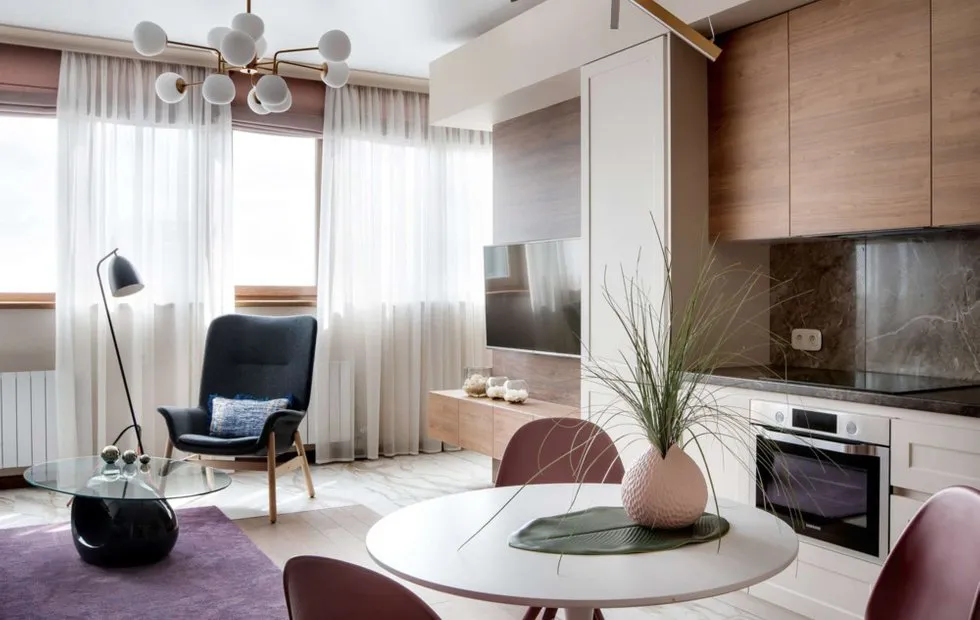 Relocation of a One-Room Apartment in a New Building: How It Was Done
Relocation of a One-Room Apartment in a New Building: How It Was Done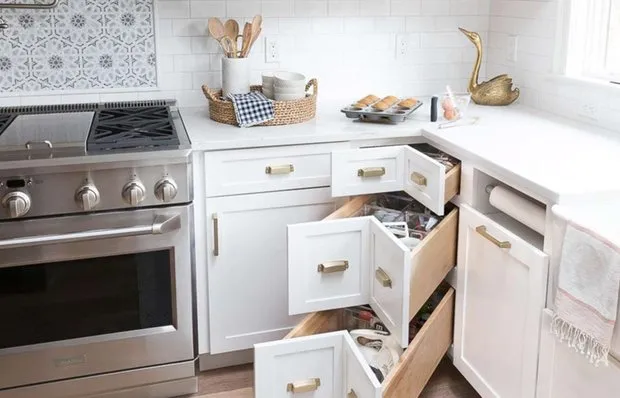 How to Organize Kitchen Cabinets Once and for All
How to Organize Kitchen Cabinets Once and for All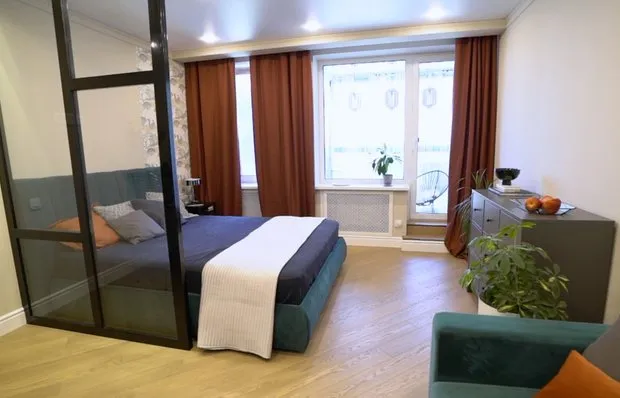 How to Arrange a Kitchen, Bedroom, and Living Room in a 33 m² Apartment?
How to Arrange a Kitchen, Bedroom, and Living Room in a 33 m² Apartment? Brick Walls, Loft Bed, and Balcony Room — Unusual Loft Design by Designer
Brick Walls, Loft Bed, and Balcony Room — Unusual Loft Design by Designer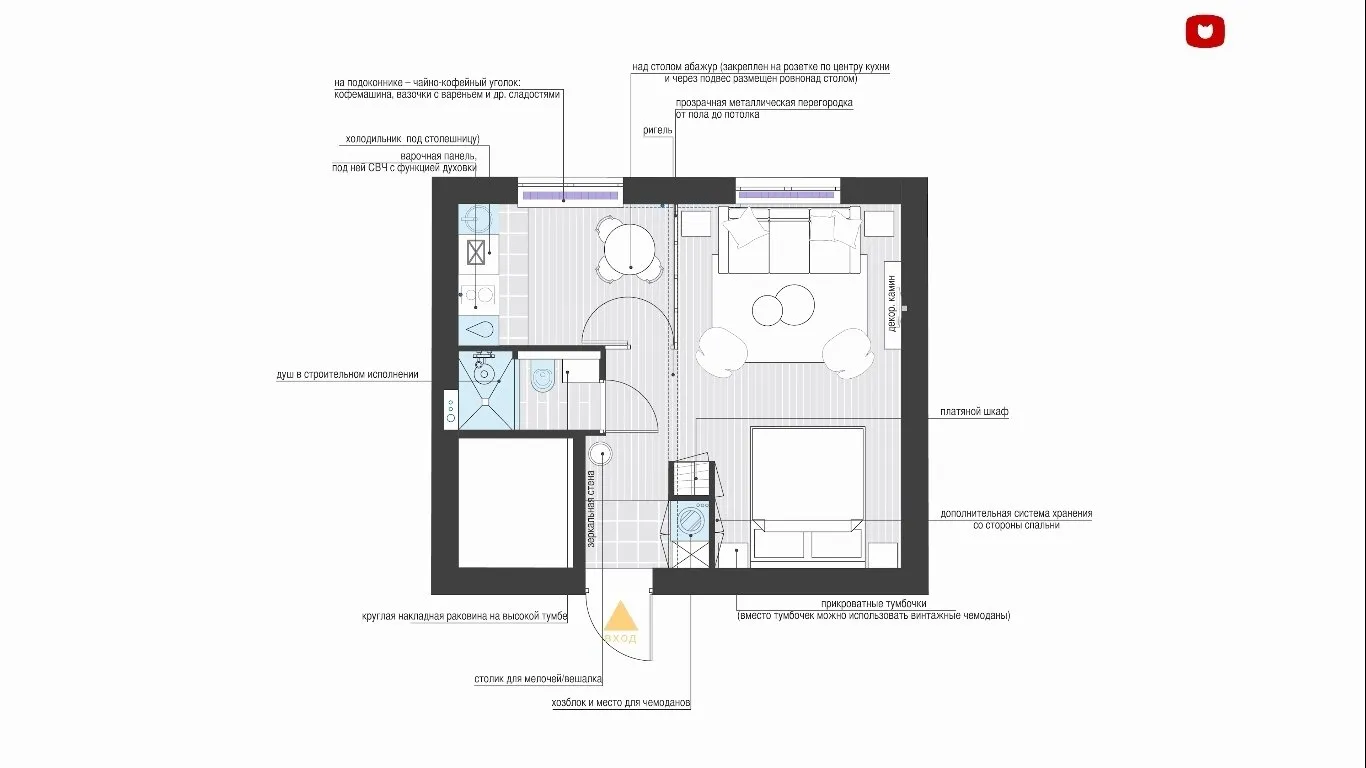 Studio 30 sqm with vibrant finishing and unconventional solutions
Studio 30 sqm with vibrant finishing and unconventional solutions